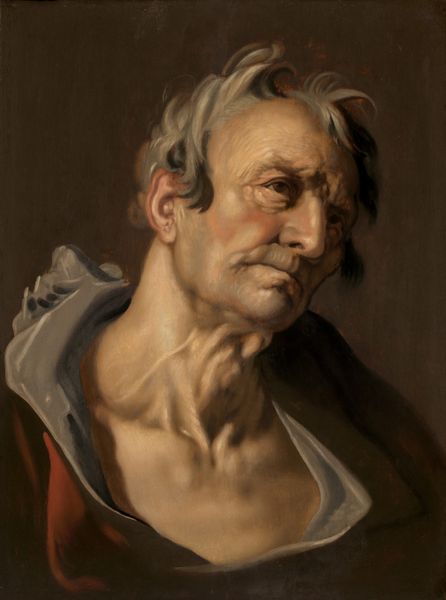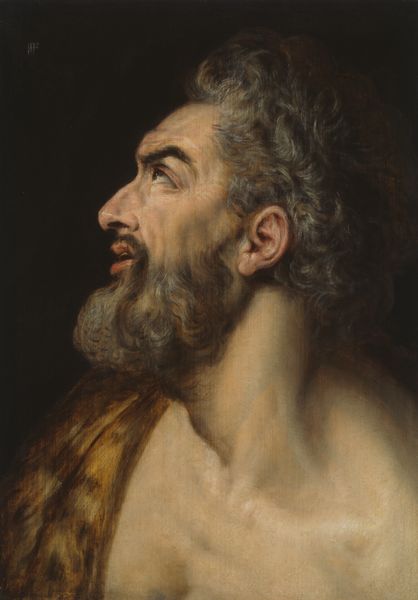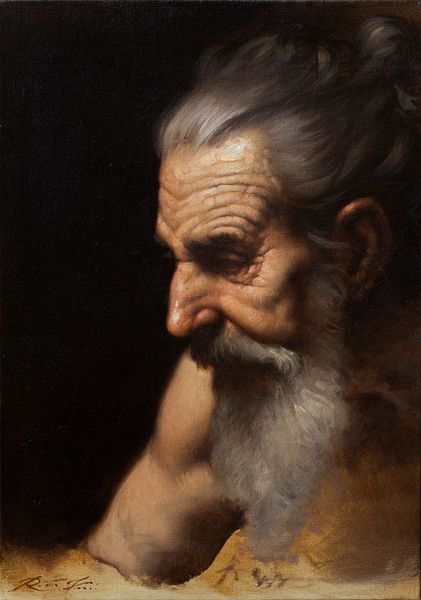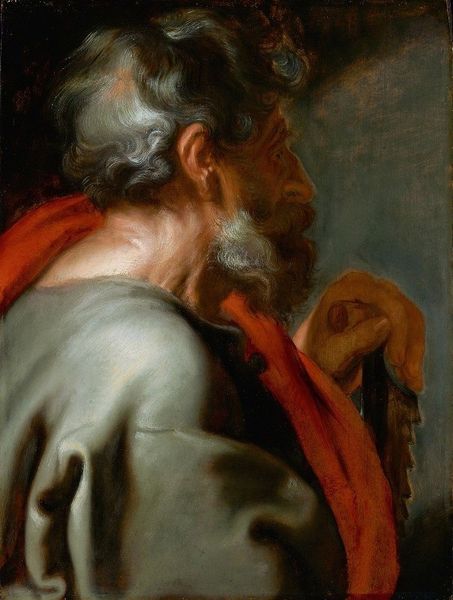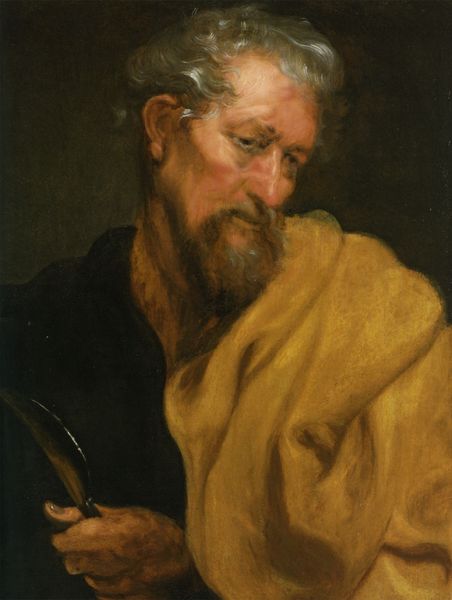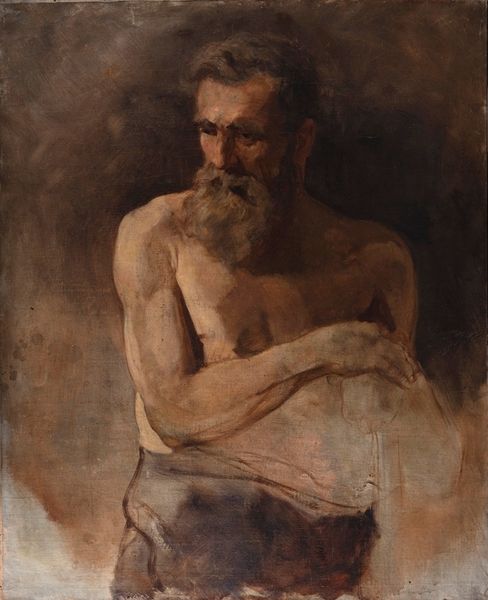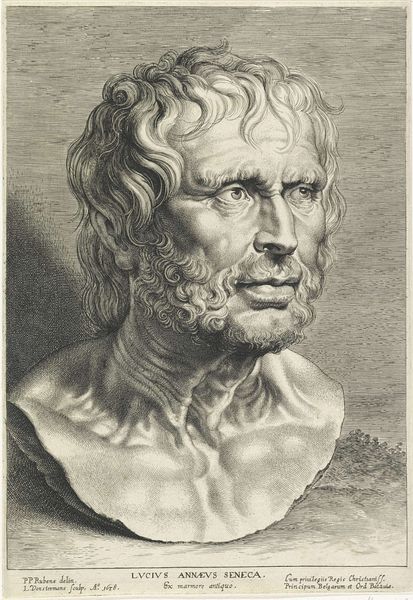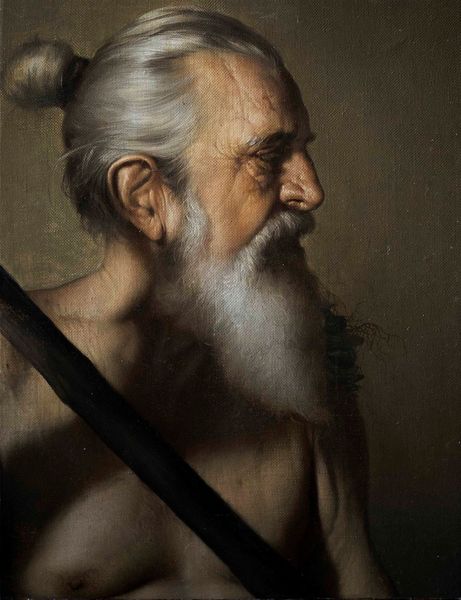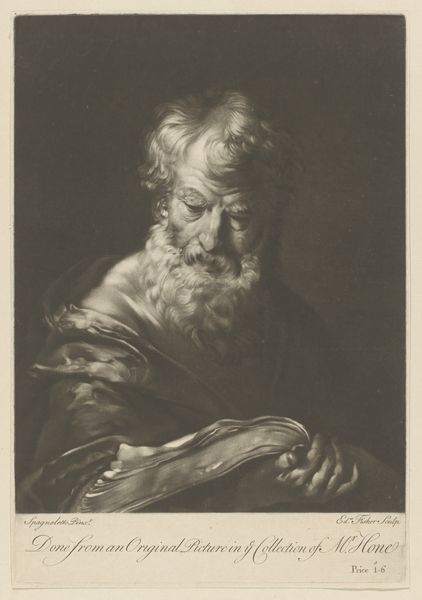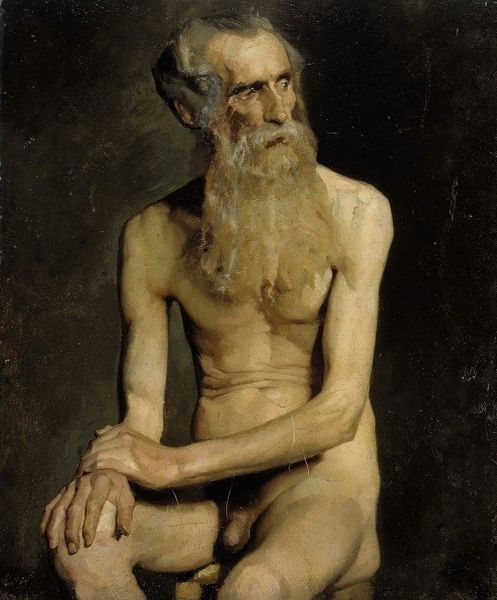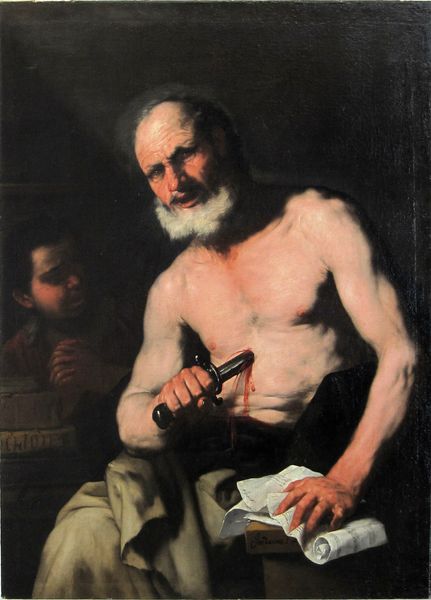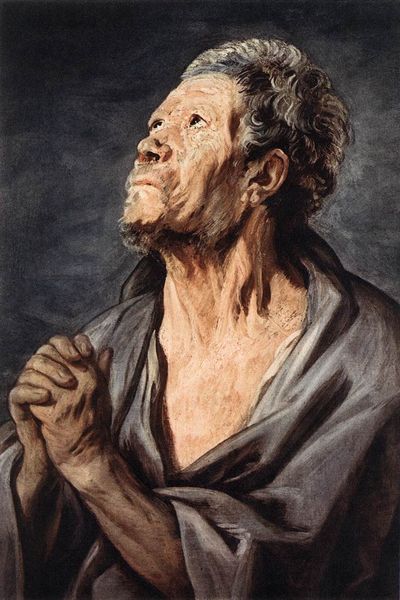
#
figurative
#
portrait
#
portrait reference
#
portrait head and shoulder
#
animal portrait
#
animal drawing portrait
#
portrait drawing
#
facial portrait
#
portrait art
#
fine art portrait
#
digital portrait
Copyright: Public Domain: Artvee
Editor: This is Peter Paul Rubens' "The Dying Seneca," created between 1612 and 1616. The dramatic lighting and the subject's expression give it a real sense of tragedy, but I'm not sure how to unpack it all. How do you interpret this work? Curator: Well, it's crucial to consider the painting's historical context. Seneca was a Stoic philosopher forced to commit suicide by Emperor Nero. Rubens, painting during the Counter-Reformation, presents Seneca not just as a victim but as a figure embodying Roman virtue in the face of tyranny. Notice how Rubens renders Seneca's body. Does it strike you as idealized or realistic? Editor: Idealized, definitely. The muscles are prominent, but he looks like he’s in pain! Curator: Exactly! Rubens uses that tension – the ideal versus the brutal reality – to explore Stoic philosophy. Seneca’s suicide wasn't about despair; it was about taking control of one’s destiny when freedom was impossible. The painting then becomes a statement against oppression, resonating with contemporary struggles for autonomy and self-determination. Editor: So it’s less about the literal death and more about resistance? Curator: Precisely. Think about power structures then and now – how does this image speak to those resisting unjust systems today, who use their bodies, voices, or art as acts of defiance? Rubens prompts us to see Seneca’s death not as a defeat, but a victory of spirit. Editor: That gives me a completely different perspective. It makes the piece feel incredibly relevant, like Seneca is still fighting for freedom centuries later. Curator: That's the power of art – to transcend its time and speak to our present. Considering artworks as agents of change, Rubens urges us to challenge oppression in its various forms.
Comments
No comments
Be the first to comment and join the conversation on the ultimate creative platform.
